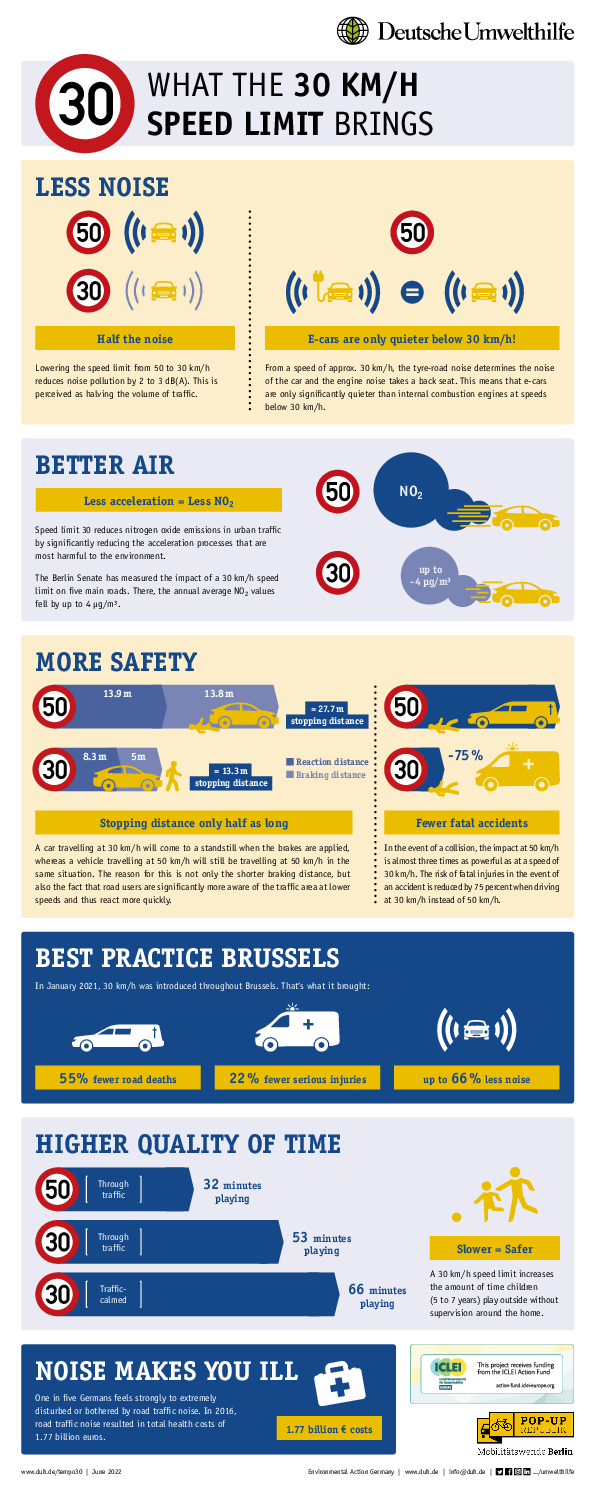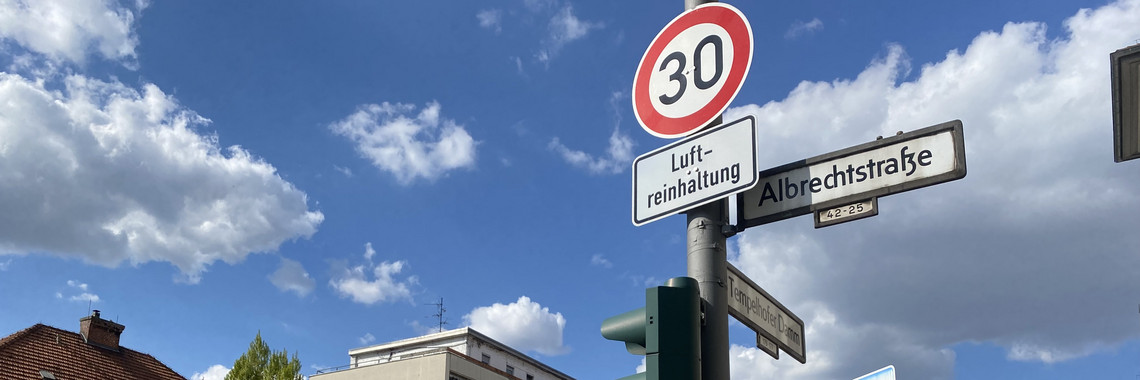30 km/h speed limit
Significantly fewer traffic fatalities, better quality of life, less noise and fewer air pollutants – does that sound good? It is also achievable: with a 30 km/h speed limit in built-up areas. This traffic calming measure has already been introduced on a large scale in Spain, France and Brussels and has proven successful. And the World Health Organisation also states clearly: 30 km/h protects human lives. So why not here as well?
Despite often repeated concerns of local authorities that the introduction of a 30 km/h speed limit would not succeed due to German road traffic law and its restriction of local political decision-making, the measure is already being implemented on many main roads! This is shown by our legal opinion.
With its lawsuit for clean air in Berlin, DUH has pushed through a new air quality plan which, among other things, provides for speed limits of 30 km/h on numerous main roads in order to improve air quality. The Berlin Senate Department has already investigated and documented the impact on traffic and air quality for five streets. The result: On four out of five streets, the levels of harmful nitrogen dioxide have been significantly reduced (between 2.2 and 3.8 µg/m3). Only on one street was the reduction less than the city-wide average. This is attributed to the fact that due to traffic congestion, the average travel speed was already well below 30 kilometres per hour. Significant reductions in peak and average speeds were observed on all other roads. Contrary to prior expectations, there were no significant evasive traffic movements into parallel roads or residential areas.
Various main roads with a 30 km/h speed limit were investigated as part of the "New Mobility Berlin" project.
- Research Report Kantstraße
- Research Report Tempelhofer Damm


